Bill Wheat and Stanley Feller May Be Longest-Serving Employees
in the Industry
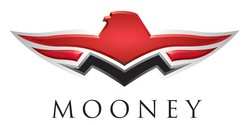 When Stanley Feller
decided to pursue a job with the local airplane manufacturing
company at Louis Schreiner Field in 1958, "he was still just a
kid." At least, that's the way Bill Wheat remembers it. A
self-proclaimed "old hand" at 23 back then, Wheat was the company's
full time test pilot. He had actually been involved with company
founder Al Mooney and his brother, Art, since they had moved their
company to Kerrville in 1954. Both Wheat and Feller admit that they
experienced some uncertainty in those early days and hoped their
new jobs would last.
When Stanley Feller
decided to pursue a job with the local airplane manufacturing
company at Louis Schreiner Field in 1958, "he was still just a
kid." At least, that's the way Bill Wheat remembers it. A
self-proclaimed "old hand" at 23 back then, Wheat was the company's
full time test pilot. He had actually been involved with company
founder Al Mooney and his brother, Art, since they had moved their
company to Kerrville in 1954. Both Wheat and Feller admit that they
experienced some uncertainty in those early days and hoped their
new jobs would last.
On Tuesday, August 12th, the current employees of Mooney will
take time away from their usual routines to assure both men that
their jobs have not only lasted, they've set records for longevity.
Wheat, who became a full-time Mooney employee in 1957 and Feller,
who began his tenure at the airplane manufacturing firm in 1958,
may have been employed longer than any other employees in the
aircraft industry. Mooney is known for having a number of long-term
employees. Of the 300+ employees at the firm today, more than 40
have accrued 25 years of service or more. A dozen of those workers
have more than 40 years with the company. Bill and Stanley are the
only ones to have surpassed the half-century mark, however.
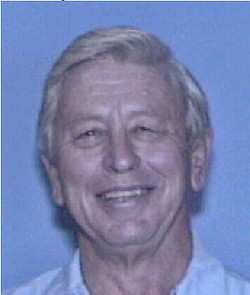 The two Mooney veterans
got to know each other pretty quickly in 1958, when Stan Feller
(pictured right) joined a work force that numbered less than 100
employees at the time. Dubbed "Cowboy" by one of his co-workers who
had trouble remembering names but knew he had been involved in
rodeos, Feller spent most of his time after graduating from
Fredericksburg High School working odd jobs on his family's and
other ranches until he went to work at Mooney on July 29, 1958. By
that time, Bill Wheat had helped the Mooney brothers secure a lease
for the facility, and even lived on site in what is now the
Customer Delivery Center. Back then it was a just a house. Wheat
took up residence and served as the night and weekend watchman. A
former station manager for Trans Texas Airlines (which became
Continental), he had moved from Uvalde to Kerrville when he heard
that Mooney was moving his airplane business from Wichita, Kansas
to the Texas Hill Country. A licensed pilot, he had flown
Mooney-designed airplanes and wanted to be a part of the
company.
The two Mooney veterans
got to know each other pretty quickly in 1958, when Stan Feller
(pictured right) joined a work force that numbered less than 100
employees at the time. Dubbed "Cowboy" by one of his co-workers who
had trouble remembering names but knew he had been involved in
rodeos, Feller spent most of his time after graduating from
Fredericksburg High School working odd jobs on his family's and
other ranches until he went to work at Mooney on July 29, 1958. By
that time, Bill Wheat had helped the Mooney brothers secure a lease
for the facility, and even lived on site in what is now the
Customer Delivery Center. Back then it was a just a house. Wheat
took up residence and served as the night and weekend watchman. A
former station manager for Trans Texas Airlines (which became
Continental), he had moved from Uvalde to Kerrville when he heard
that Mooney was moving his airplane business from Wichita, Kansas
to the Texas Hill Country. A licensed pilot, he had flown
Mooney-designed airplanes and wanted to be a part of the
company.
When Stan Feller joined the company Al Mooney had already sold
it to Hal Rachal and Norm Hoffman of Midland, Texas, but he was
still actively involved in the design and production of his latest
design, the M20, a four-place single engine airplane with a
distinctive "backwards" tail. Both Feller and Wheat knew him
personally.
While Feller learned how to form parts and operate the "drop
hammer" in the tight confines of the original plant, Wheat was
flying literally every airplane Mooney produced. "I flew all but
the first 18 of the M20's when they came off the line until I
eventually got a helper who took some of the load after a few
years. I know for a fact that I've flown more than a million miles
in Mooney airplanes without ever leaving the confines of the
airport's air space," he says.
Feller spent virtually his entire career in Mooney's fabrication
shop. His resume includes stints as a sheet metal lead, a foreman
in the fabrication shop and 45 years as its supervisor. Since 2002
he has filled his latest role as "Mooney's famous tour guide." He
conducts visitors through the plant and regales them with stories
from the company's past as well as explaining its current
operations. "It's only appropriate that Stanley serves as Mooney's
number one guide for plant tours," says Wheat, whose current title
is Senior Customer Support Technician. "Who else knows more about
the facility than he does-he was working here when they built most
of it," he added.
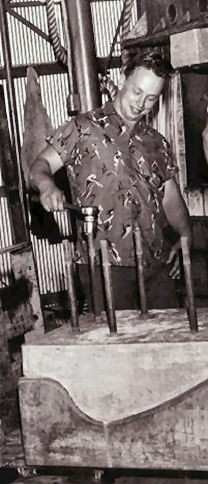
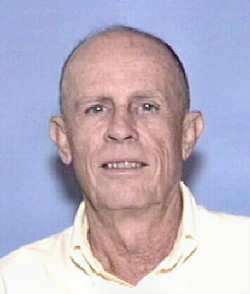 Wheat (right) moved
from his initial duties as a test pilot to the position of
engineering coordinator for aircraft systems. "In the early days,
there weren't a lot of people here. Those that were did a lot of
different jobs. When I started I think there were 35 employees.
Three of us, Herb Anderson, Kenny Lupe and myself used to design
improvements and come up with model changes for the airplanes on
nights and weekends. Once we had something we thought would work,
we'd bring in the draftsmen and have them draw it up and then we'd
build it and certify it."
Wheat (right) moved
from his initial duties as a test pilot to the position of
engineering coordinator for aircraft systems. "In the early days,
there weren't a lot of people here. Those that were did a lot of
different jobs. When I started I think there were 35 employees.
Three of us, Herb Anderson, Kenny Lupe and myself used to design
improvements and come up with model changes for the airplanes on
nights and weekends. Once we had something we thought would work,
we'd bring in the draftsmen and have them draw it up and then we'd
build it and certify it."
That, Wheat explains, is how he learned enough engineering to
eventually become a Designated Engineering Representative (DER) for
the Federal Aviation Administration in 1968-at their request.
Though they had five degreed engineers in the area applying for the
position, FAA officials sent him the application and, when he
filled it out and returned it, tapped him for the role. He has
maintained the authorization and still does some consulting on the
side, in fact. During his tenure at Mooney he has overseen
certification and airworthiness and avionics and electrical systems
design and installations, too. In fact, he's done a little bit of
everything during his 50+ years with the company.
Both men remember working through good and challenging times. "I
was one of only 17 employees from 1970-1973 when we only had one
person per department, basically handling spare parts," Feller
recalled. "And, I remember a day in the mid-60's when we reached
the other extreme. We hired our 1000th employee, Fern Corey, who
worked with us in the Fab shop, in 1967. The press covered the
event because it was such a big deal for a company in Kerr County
to have 1,000 employees. Back then, we were turning out 3 airplanes
a day," he added. "Our high point was probably 1966 and '67 before
Hal Rachal got the idea that he wanted to make Mooney the biggest
company in general aviation. He went out and bought two bankrupt
companies, Ted Smith's Aerostar and Alon, and another one that
hadn't started up yet, Mitsubishi, and proceeded to bankrupt Mooney
instead," Wheat remembered.
Having reached the half-century mark at Mooney, Stanley, who
will turn 71 on his next birthday, says he may just stick around
for his 60th anniversary. "I wouldn't change anything about my
career," he says. "I've never regretted staying at Mooney the whole
time. It's pretty much a family, here and I hear people on my tours
comment all the time on how people here have such a great attitude.
We take a lot of pride in our work because there is so much
handwork on our airplanes. That requires personal attention and
it's wonderful to work with so many individuals who can look at the
airplanes we turn out and be proud that our products have such a
great reputation. Mooneys have the strongest metal cabin structure
and wing in the industry and that's a direct result of the
attention that we've paid to our work. When I consider the people
and all I've experienced, I don't see any reason to retire!"
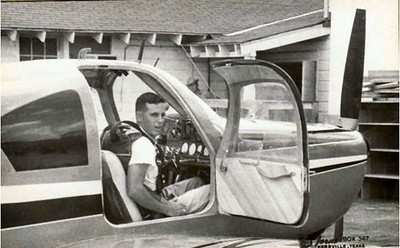
Bill Wheat, who is now 78, feels the same way. "I'm doing
something I really enjoy, so why should I quit doing it? I have no
desire to retire. I certainly can't sit around and watch television
all day," he notes. Instead, he arrives at the Mooney plant each
day at around 2 AM…and stays for about 12 hours. "I get
there early enough so that Mooney operators in Australia, Asia,
South Africa and Europe have someone they can reach when they call
with a technical problem. It's what I want to be doing. It keeps me
going."
Mooney's current management team, most of who weren't born when
Wheat and Feller began their careers at the company, marvel at the
pair. "We have a great deal of affection for Bill and
Stanley…and even more respect for them and what they have
meant to this company," said Dennis Ferguson, Mooney's chief
executive officer. "They are daily reminders of the great heritage
that Mooney possesses and their dedication serves as an example for
all of us. When a customer calls in with a technical issue and Bill
Wheat answers the phone, that customer is not only getting the
answer from someone who helped design the system in question, he or
she is getting an opportunity to see what real commitment to
customer satisfaction is all about. And, when a Mooney owner takes
a tour with Stan Feller, he or she comes away knowing just about
all there is to know about how his or her airplane was built and
the pride that goes into it. These two guys are revered members of
the Mooney family and we're proud to honor their service," he
concluded.
 ANN's Daily Aero-Linx (04.13.24)
ANN's Daily Aero-Linx (04.13.24) ANN's Daily Aero-Term (04.13.24): Beyond Visual Line Of Sight (BVLOS)
ANN's Daily Aero-Term (04.13.24): Beyond Visual Line Of Sight (BVLOS) Airborne 04.09.24: SnF24!, Piper-DeltaHawk!, Fisher Update, Junkers
Airborne 04.09.24: SnF24!, Piper-DeltaHawk!, Fisher Update, Junkers Aero-News: Quote of the Day (04.14.24)
Aero-News: Quote of the Day (04.14.24) ANN's Daily Aero-Term (04.14.24): Maximum Authorized Altitude
ANN's Daily Aero-Term (04.14.24): Maximum Authorized Altitude







